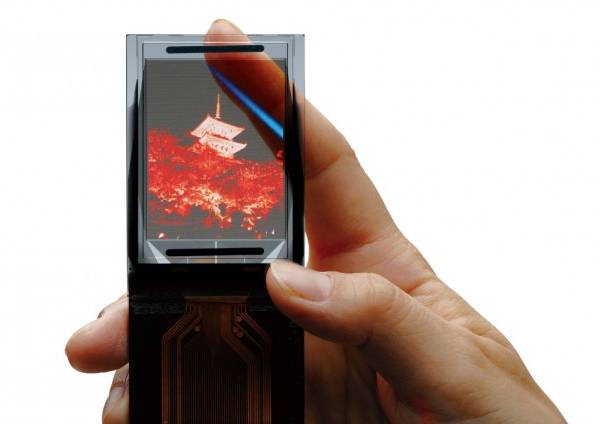TDK has started mass production of a newly developed see-through passive matrix Quarter Video Graphics Array (QVGA) organic electroluminescent (EL) display, primarily aimed at mobile phones and other mobile electronic devices. The UEL476 see-through type organic EL display is meant for mobile applications: it has a field angle of 2.4 inches, a transmittance of 40 percent, a display area of 36.0mm x 47.9mm, a resolution of 240 x 320, and a brightness of 150 cd/m2.
It is see-through, but is constructed so that the display contents cannot easily be seen from behind (for enhanced privacy). In other words, if you want to text while walking, you can now do so without crashing into anything. At the same time, nobody will be able to check out what you are doing on your phone if they're looking from the other side.

Organic EL displays are formed through thin-film techniques, using organic material that emits light in response to an electric current. High brightness, wide viewing angle, and other favorable characteristics make this display type very easy on the eyes. Since it also has a fast response time, Organic EL displays have been adopted for wider use in flat panel displays.
All organic EL displays from TDK employ the passive matrix principle, where a grid of vertical and horizontal electrode lines is used to drive a line of pixels each. By contrast, an active matrix display uses a dedicated thin film transistor (TFT) to drive each pixel separately.
The use of the color filter principle, meanwhile, means that the service life of the each Red, Green, and Blue color of the RGB elements is identical, and color shift is absent. Furthermore, favorable temperature characteristics allow a wide operating range of -20°C to +85°C. Further development efforts aim to widen the range to include various color products, as well as towards further improving precision and longer service life for all types.